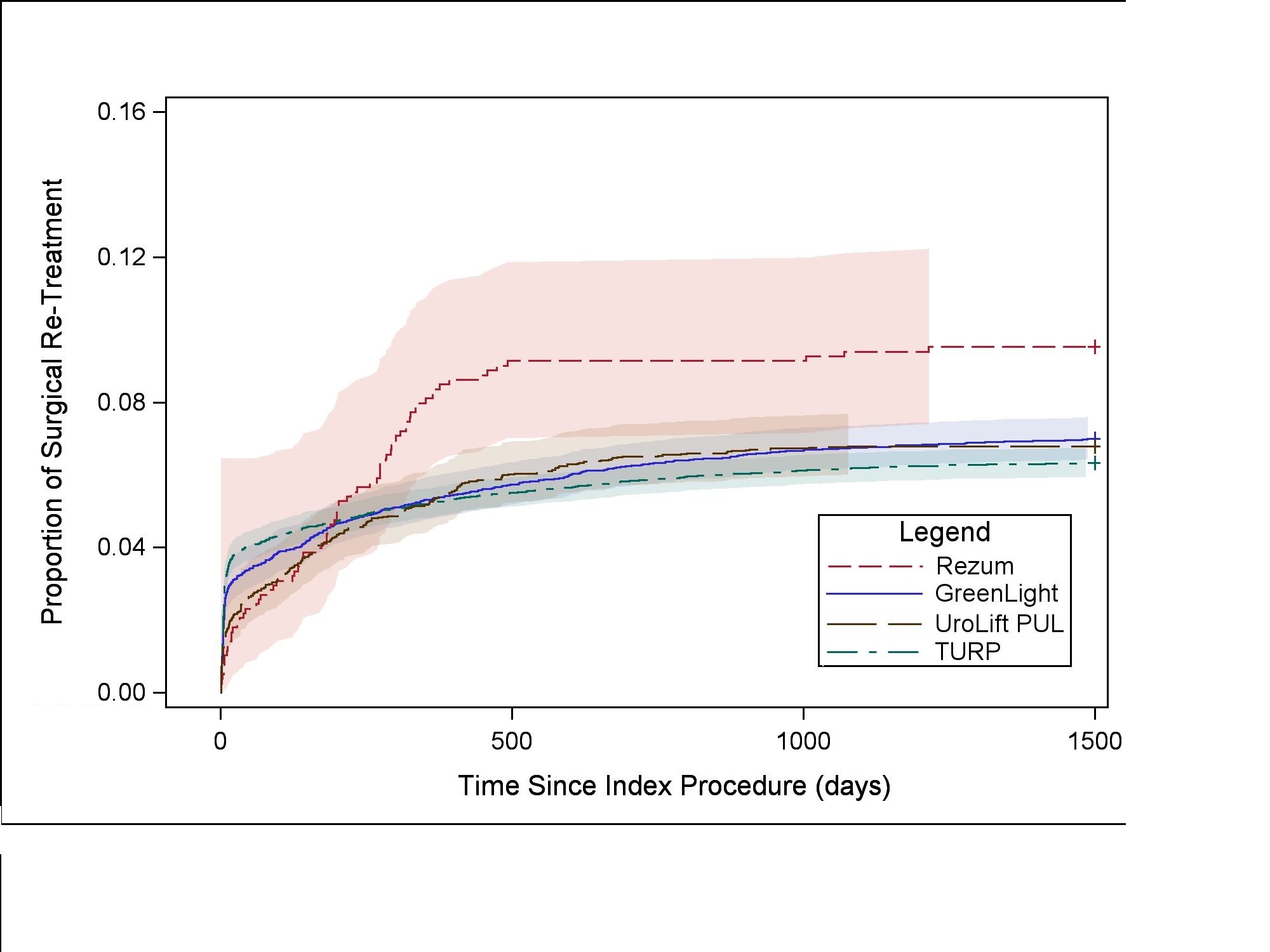Real-World Healthcare Resources Analysis Reveals UroLift PUL has Similar Surgical Retreatment Rates and Lower Post-Operative Complications vs. TURP and GreenLight Laser PVP
Daniel Rukstalis, MD1, Steven Kaplan, MD2, Ronald Kaufman, MD3.
1Prisma USC Division of Urology, Columbia, SC, USA, 2Icahn School at Mount Sinai, New York, NY, USA, 3Teleflex, LLC, New York, NY, USA.
Introduction and Objective The surgical approach to resolving prostatic obstruction has evolved from being a TURP-only pathway to include innovative options that minimize toxicity with continued effectiveness. Real-world studies which compare outcomes for MISTs and traditional surgery for BPH and impacts on health care systems are sparse. Here, Medicare and commercial claims are analyzed for rates of surgical retreatment and post-operative complications experienced by patients who underwent a traditional surgery (TURP/GreenLight Laser PVP) or MIST (Prostatic Urethral LIFT (PUL utilizing the UroLift System)/Rezum steam injection) for LUTS/BPH. Methods Longitudinal patient-level data was acquired from a retrospective observational analysis of a representative sample of Medicare and commercial medical claims (obtained from IBM Watson). Men with a BPH diagnosis code who received an outpatient index procedure of TURP, GreenLight, UroLift PUL, or Rezum from January 2015-December 2019 were included. Surgical retreatment was defined as undergoing TURP, GreenLight, UroLift PUL, Rezum, or HoLEP secondary to the index procedure. Post-operative complications were defined as secondary procedures with a CPT or ICD10-PCS code. Rates for complications and surgical retreatment and were calculated through 1 and 4 years respectively via cumulative incidence curves Results The database includes the following patient distribution: 18,794 TURP patients, 9,894 Greenlight, 4,639 UroLift PUL and 780 Rezum patients. 9.5% of Rezum patients had a surgical retreatment over 4yrs, which was higher than retreatment after TURP (6.3%), GreenLight (7.0%), and UroLift PUL (6.8%) (logrank p=0.004) (Fig 1). The lowest incidence of 1-year overall complications occurred after PUL (16%), and was highest after Rezum (23%). Rates of the following complications at 1-year were highest for the following procedures: catheterization - Rezum 7.3%, stone removal - TURP 4.5% and GreenLight 3.6%, and cystoscopy - UroLift PUL 4.1%. Other complications (e.g. bleeding control, stricture repair, fulguration) occurred at a frequency of ≤1%. Conclusions The largest healthcare claims analysis for BPH procedures reveals that complications are lowest after UroLift PUL. Surgical retreatment occurs with similar frequency between UroLift PUL, TURP and GreenLight, and is highest after Rezum. 
Back to 2021 Abstracts
